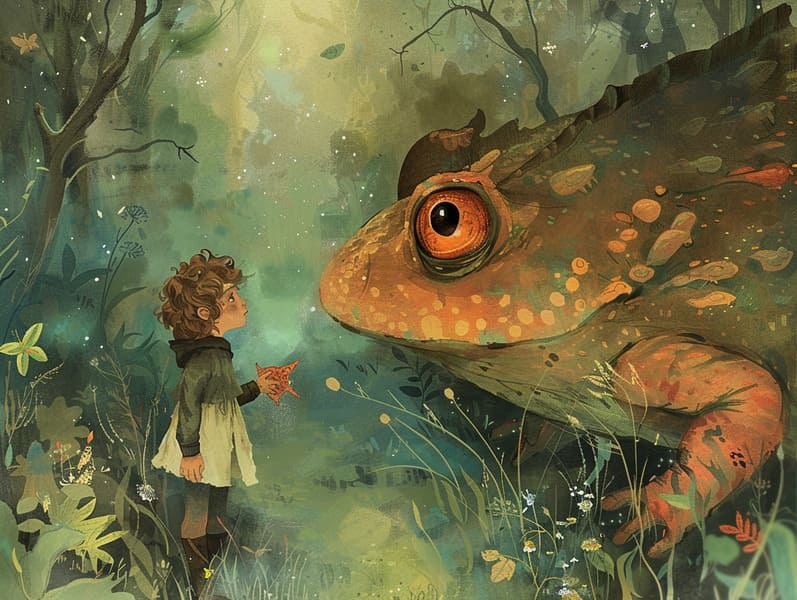Discovering the Beauty of Evening Narratives: Developing Treasured Memories with Kids
Discovering the Beauty of Evening Narratives: Developing Treasured Memories with Kids
Blog Article

Evening is a special time for families. It’s a time to wind down, cuddle up, and revel in the magic of nighttime tales.
For centuries, children's bedtime stories have been a treasured ritual, offering more than just a way to go to sleep. They provide an opportunity for bonding, learning, and sparking vision.
Why Bedtime Stories are Important
Evening stories for little ones serve more than a way to end the day. They play a crucial role in a child’s development and in strengthening the family bond. Here’s why they are valuable:
1. Quality Time: Storytime before sleep fosters a special period of closeness between caregivers and children. It’s a moment of affection that helps children feel loved and reassured.
2. Language Skills: Hearing tales helps children develop their verbal abilities. They pick up new terms, understand construction, and sharpen their auditory and interpretation abilities.
3. Imaginative Skills: Nightly stories lead them to wondrous worlds, stimulating creativity. They dream of characters, settings, and adventures, which stimulates their creativity.
4. Feeling Recognition: Bedtime narratives often feature characters facing challenges and emotions. These tales help kids handle and process their own sentiments, fostering emotional growth.
5. Cognitive Skills: Absorbing a narrative helps children develop attention span, retention, and analytical skills. They gain to follow narratives, remember facts, and guess endings.
How to Add Bedtime Stories to Your Routine
Establishing a bedtime habit that involves sharing tales is manageable and rewarding. Here’s how to ensure it becomes a beloved part of your night-time custom:
1. Pick a Snuggly Spot: Choose a comfortable place where you and your child can cuddle without interruptions. A comfy bed or a peaceful reading nook works great.
2. Set a Consistent Time: Determine a routine time each night for reading. Regularity helps children be accustomed and makes the ritual more manageable.
3. Choose Age-Fitting Stories: Choose tales that are appropriate for your child’s age. Small children might be drawn to illustrated books with uncomplicated narratives, while bigger children may be interested in longer stories with more engaging plots.
4. Make the Story Interactive: Make the tale come alive by incorporating different accents and voices, adding noises, and inviting your child to participate. Ask points about the story to hold their attention.
5. Set a Relaxing Mood: Dim the lights, use hushed tones, and create a calming environment to help your child calm down.
Finding Excellent Bedtime Stories
There are varied resources where you can find amazing bedtime stories for children. Here are some choices to explore:
1. Children’s Books: Visit your area library or bookstore to find a varied selection of bedtime stories for kids. Perusing the options together can be a enjoyable activity that also gives children to decide on stories that appeal to them.
2. Online Sources: There are many internet sites that offer free bedtime stories. Sites like children's story websites provide a variety of short stories for kids that you can read on screen. These choices are great for finding new and varied stories without fees.
3. Apps for Storytelling: For nights when you’re too tired to read, think about audiobooks or storytelling apps. These can provide a soothing voice to read your child a story, ensuring they still get their bedtime story fix. Apps often offer interactive parts that can hold their focus further.
4. Custom Stories: Design your own stories tailored to your child’s passions. Personalized stories can be remarkably engaging and meaningful. You can incorporate your child in the narration process, making them a part of the adventure.
Advantages of Short Stories
Quick stories for bedtime are particularly great for bedtime. They provide all the plusses of longer stories but are more concise, making them perfect for relaxing before sleep. Here’s why short stories are a ideal choice:
1. Straightforward: Compact stories are clear and easy for kids to get, even after a long day. They can swiftly grasp the tale and enjoy the story without losing focus.
2. Quick Engagement: These get more info stories rapidly engage children, keeping their engagement and creativity. This makes them suitable for keeping bedtime practices simple yet enjoyable.
3. Wide Range: Quick stories offer for variety in your bedtime books. You can choose a different story each night, keeping the ritual exciting and exciting for your child.
4. Time Management: For busy parents, concise narratives are a fast way to confirm children still get their nightly dose of storytelling. They fit well into a full schedule while still offering the full plusses of a bedtime story.
The Enchantment of "Read Me a Story"
The simple phrase, “Can you tell me a story?” can open a world of magic for children. Saying yes to this request not only answers a child’s wish for attention and engagement but also forms lasting experiences. Here’s why it’s special:
1. Link: Reading to your child fosters a deep emotional connection. It’s a time for closeness, sharing, and bonding.
2. Tradition: Forming a bedtime story tradition creates a important tradition that children are excited for every night. It’s a tradition that can be transferred through generations.
3. Development Together: As you narrate, you’ll notice your child’s development and maturation. Their questions, reactions, and understanding of the stories grow, offering insights into their developing minds.
4. Protective Space: Bedtime stories provide a safe space for children to explore emotions, face fears, and find comfort in the known presence of a parent.
Final Thoughts
Children’s bedtime stories are a effective tool for encouraging a child’s growth and creating unforgettable events of bonding.